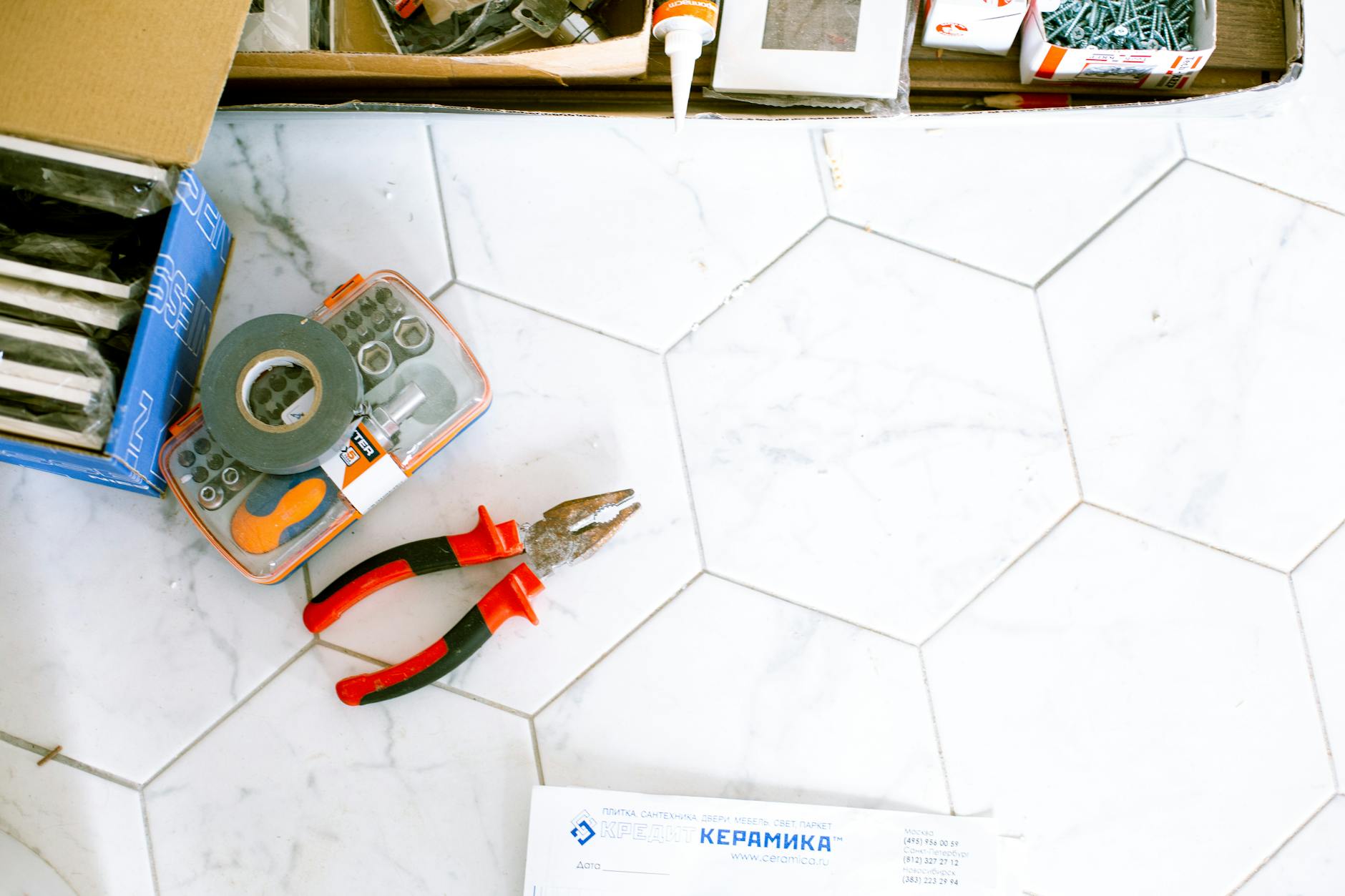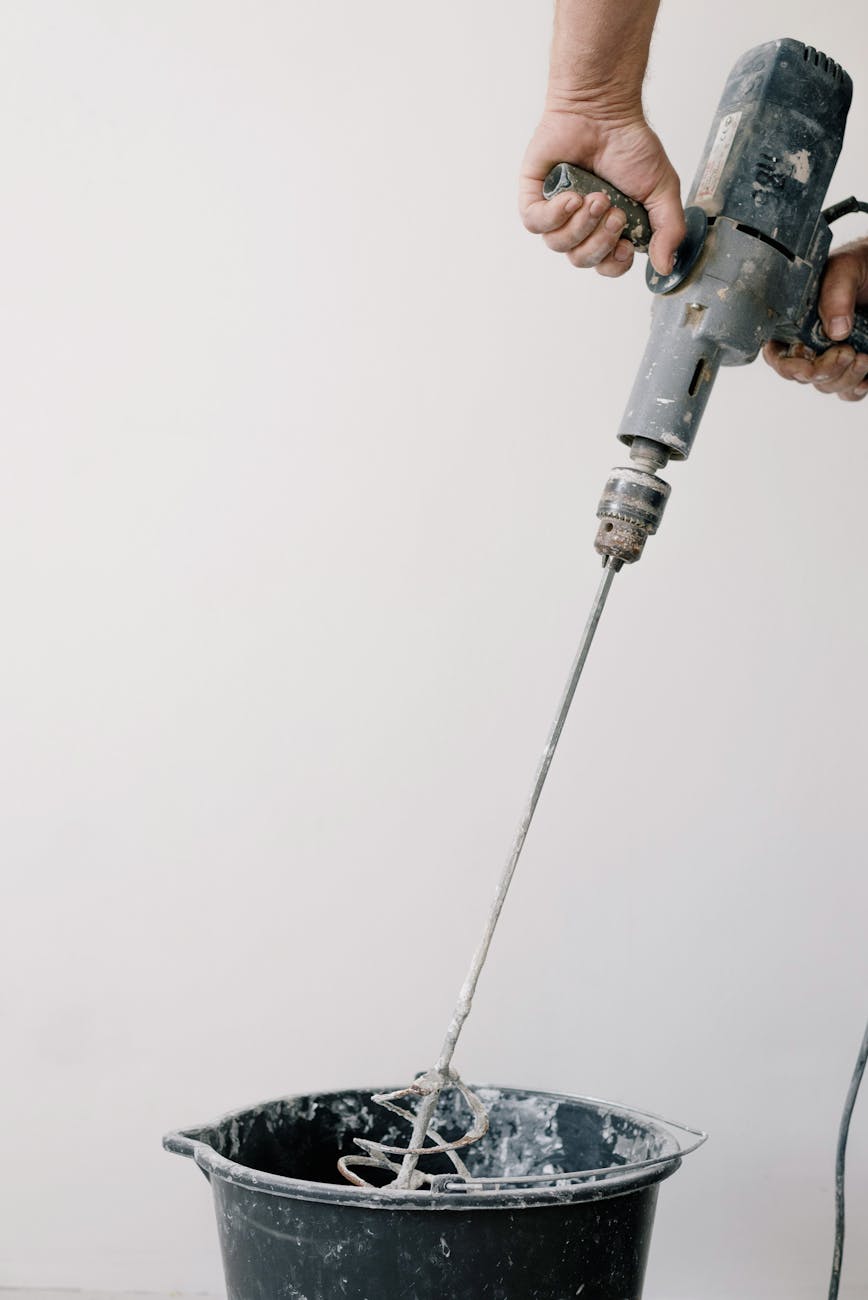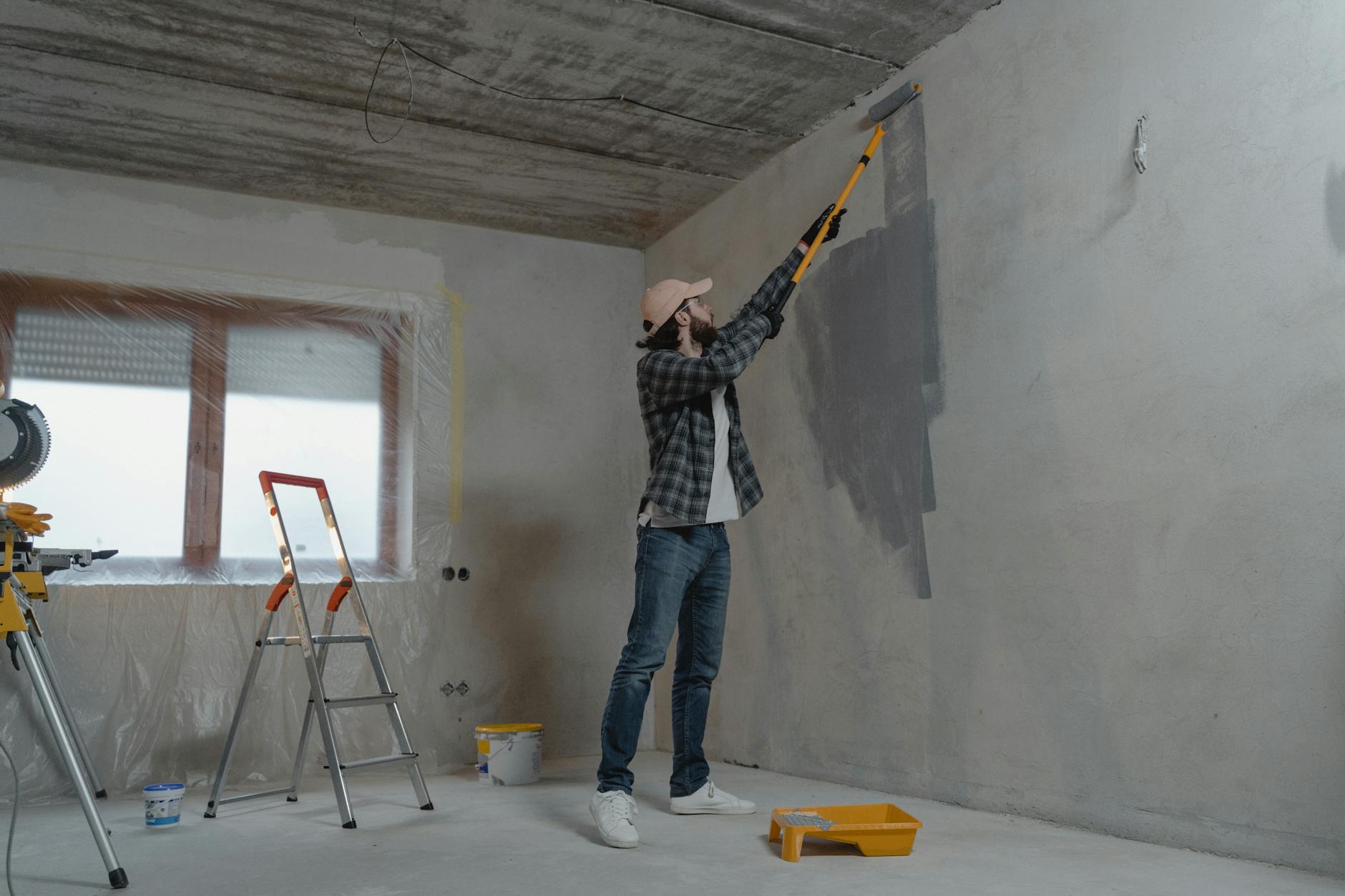Introduction to DIY home improvement
In today’s fast-paced world, where time and resources are precious commodities, the art of do-it-yourself (DIY) home improvement has become a valuable asset for every homeowner. Not only does it save us money, but it also instills a sense of pride and accomplishment that comes with crafting something with our own hands. As men, we often find ourselves drawn to the challenge of tackling home improvement projects, fueled by a desire to showcase our handiwork and provide a comfortable living space for our families.
DIY home improvement encompasses a wide range of tasks, from simple repairs and maintenance to more complex renovations and upgrades. By mastering these essential skills, we not only enhance the value and functionality of our homes but also cultivate a sense of self-reliance and resourcefulness that extends far beyond the confines of our living spaces.
Benefits of learning DIY home improvement skills
Embarking on DIY home improvement projects offers a multitude of advantages that extend beyond the tangible results. Here are some compelling reasons why every man should embrace this rewarding pursuit:
- Cost Savings: Hiring professionals for even minor tasks can quickly add up, draining our finances. By acquiring DIY skills, we can tackle projects ourselves, saving substantial amounts of money that can be redirected towards other household expenses or personal goals.
- Personal Satisfaction: There is an unparalleled sense of accomplishment that comes with completing a project with our own hands. The pride of creating something tangible and functional instills a profound sense of fulfillment and boosts our confidence in our abilities.
- Customization: DIY projects allow us to tailor our living spaces to our unique preferences and needs. We can infuse our personal style, creativity, and functionality into every aspect of our homes, making them truly our own.
- Valuable Life Skills: The skills acquired through DIY home improvement transcend the boundaries of our homes. They foster problem-solving abilities, attention to detail, and a hands-on approach that can be applied to various aspects of our lives, enhancing our overall competence and self-sufficiency.

Essential tools for DIY home improvement
Before embarking on any DIY home improvement project, it is crucial to equip ourselves with the essential tools that will serve as our trusty companions throughout the journey. While the specific tools may vary depending on the project at hand, a well-stocked toolbox should include the following:
- Hand Tools:
- Hammer
- Screwdrivers (flathead and Phillips)
- Pliers (slip-joint and needle-nose)
- Utility knife
- Tape measure
- Level
- Wrench set
- Power Tools:
- Drill/driver
- Circular saw
- Jigsaw
- Sander
- Heat gun
- Safety Gear:
- Safety glasses
- Work gloves
- Dust masks
- Ear protection
Investing in quality tools not only ensures longevity and durability but also enhances precision and efficiency, making our DIY endeavors more enjoyable and successful.
Safety tips for DIY home improvement projects
While DIY home improvement projects can be immensely rewarding, they also carry inherent risks if proper safety precautions are not taken. As responsible homeowners and DIY enthusiasts, it is imperative to prioritize safety at every step. Here are some essential safety tips to keep in mind:
- Read Instructions Thoroughly: Before starting any project, carefully read and understand the instructions provided by the manufacturer or expert sources. Failing to follow instructions can lead to costly mistakes or even accidents.
- Wear Appropriate Safety Gear: Protect yourself by wearing the necessary safety gear, such as safety glasses, gloves, dust masks, and ear protection, depending on the project at hand.
- Maintain a Clean and Organized Work Area: A cluttered and disorganized workspace increases the risk of trips, falls, and accidents. Keep your work area tidy and free from obstructions.
- Use Proper Techniques: Familiarize yourself with the correct techniques for handling tools and materials. Improper use can lead to injuries or damage to your home.
- Disconnect Power Sources: When working with electrical systems or power tools, always disconnect the power source before starting any work to prevent accidental electrocution or injury.
Remember, safety should always be the top priority when undertaking DIY home improvement projects. By adhering to these guidelines, we can ensure a secure and enjoyable experience while protecting ourselves and our loved ones.
“DIY home improvement is not just about fixing things; it’s about building confidence, creating memories, and transforming a house into a home with your own two hands.”
Painting and wallpapering
Refreshing the walls of our homes with a fresh coat of paint or a stunning new wallpaper can breathe new life into any space. Whether you’re looking to create a cozy and inviting atmosphere or a bold and vibrant statement, mastering the art of painting and wallpapering is an essential DIY skill.
Before diving into the project, it’s crucial to prepare the surface properly. This includes cleaning the walls, repairing any cracks or holes, and applying a suitable primer. Choosing the right paint or wallpaper is equally important, considering factors such as color, finish, and durability.
When painting, use high-quality brushes and rollers for a smooth and even application. Proper cutting-in techniques around edges and trim will ensure a professional-looking finish. For wallpapering, meticulously measure and plan the layout, ensuring accurate alignment and seamless patterns.
Remember, patience and attention to detail are key when it comes to painting and wallpapering. Take your time, and don’t hesitate to seek guidance from experienced DIYers or online resources if needed.
Basic plumbing repairs and installations
Plumbing issues can quickly escalate into major headaches if left unaddressed. By mastering basic plumbing repairs and installations, we can save ourselves the hassle and expense of calling a professional for every minor issue.
Start by familiarizing yourself with the plumbing system in your home, including the location of shutoff valves and main water supply lines. This knowledge will prove invaluable in case of emergencies or when tackling specific projects.
Simple tasks like unclogging drains, fixing leaky faucets, or replacing washers and seals can often be handled with a few basic tools and a bit of know-how. More advanced projects, such as installing new fixtures or rerouting pipes, may require additional research and preparation.
Always remember to turn off the water supply before attempting any plumbing repairs or installations. Additionally, exercise caution when working with pipes and fittings to avoid water damage or potential injuries.

Electrical repairs and installations
Electrical work can be daunting, but with the proper knowledge and precautions, basic electrical repairs and installations are well within the grasp of any DIY enthusiast. From replacing light fixtures and switches to installing new outlets or ceiling fans, these projects can add convenience and value to our homes.
Before tackling any electrical work, it’s crucial to understand the fundamental principles of electricity and familiarize ourselves with local building codes and safety regulations. Investing in a voltage tester and other essential tools will ensure accurate and safe work practices.
When working with electrical systems, always turn off the power at the circuit breaker or main panel. Exercise caution when handling wires and connections, and never attempt to work on live circuits unless you have extensive experience and training.
Remember, electrical work can be hazardous if not approached with the utmost care and respect. If you ever feel unsure or uncomfortable, it’s always better to err on the side of caution and seek professional assistance.
Installing flooring and tiling
Upgrading the floors in our homes can significantly enhance both the aesthetic appeal and functionality of our living spaces. Whether you’re looking to install hardwood, laminate, or tile, mastering this DIY skill can save you a considerable amount of money while allowing you to customize your floors to your unique preferences.
Proper preparation is key when it comes to flooring and tiling projects. Ensure that the subfloor is level, clean, and free from any debris or imperfections. Carefully measure and plan the layout, taking into account factors such as room dimensions, doorways, and appliances.
For hardwood or laminate installations, follow the manufacturer’s instructions regarding underlayment, expansion gaps, and proper installation techniques. When working with tile, pay close attention to spacing, grout lines, and proper adhesive application.
Remember, patience and attention to detail are crucial when installing flooring and tiling. Take your time, and don’t hesitate to seek guidance from experienced DIYers or online resources if needed.
Basic carpentry and woodworking projects
Woodworking is a versatile and rewarding DIY skill that can be applied to a wide range of home improvement projects. From building shelves and cabinets to constructing decks and outdoor structures, mastering basic carpentry techniques can open up a world of possibilities.
Start by familiarizing yourself with the different types of wood, their properties, and suitable applications. Invest in essential woodworking tools, such as saws, drills, sanders, and clamps, and learn how to use them safely and effectively.
When tackling woodworking projects, pay close attention to measurements, angles, and joints. Proper planning and layout will ensure a seamless and sturdy final product. Don’t be afraid to practice on scrap wood or seek guidance from experienced woodworkers or online tutorials.
Remember, woodworking requires patience, precision, and attention to detail. Take your time, and prioritize safety at every step of the process.
Outdoor home improvement projects
Extending our DIY efforts to the great outdoors can not only enhance the curb appeal of our homes but also create inviting spaces for entertaining and relaxation. From landscaping and gardening to building decks, patios, and outdoor structures, the possibilities are endless.
When it comes to landscaping and gardening, start by assessing your outdoor space and developing a plan that aligns with your vision and available resources. Consider factors such as climate, soil conditions, and sun exposure to ensure the success of your plantings.
For outdoor structures like decks and patios, proper planning and adherence to local building codes are essential. Ensure a solid foundation, use weather-resistant materials, and prioritize safety features like railings and non-slip surfaces.
Remember, outdoor projects often involve exposure to the elements, so take necessary precautions to protect yourself from sun, heat, and potential hazards. Seek assistance when needed, and don’t hesitate to consult professionals for complex or potentially dangerous tasks.
Conclusion
Mastering DIY home improvement projects is a journey that empowers us as men, cultivating a sense of self-reliance and accomplishment. By embracing these essential skills, we not only enhance the value and functionality of our homes but also foster personal growth and a deeper connection to our living spaces.
Remember, every project, no matter how small, presents an opportunity to learn and hone our abilities. Embrace the challenges, celebrate the successes, and never stop seeking knowledge and inspiration.
As we embark on this rewarding path, let us embrace the satisfaction that comes from creating something with our own hands, and let our homes be a testament to our dedication and craftsmanship.If you’re ready to take the plunge into the world of DIY home improvement, why not start with a simple project like painting a room or installing a new light fixture?
By taking that first step, you’ll not only enhance your living space but also gain the confidence to tackle more ambitious projects in the future. Don’t hesitate to reach out to experienced DIYers or consult online resources for guidance and inspiration. With the right tools, knowledge, and determination, you’ll be amazed at what you can accomplish. So, roll up your sleeves, grab your toolbox, and let the DIY journey begin!
Innovation at the Forefront: Evaluating the Impact of Technology in Today’s Educational Landscape
How Technology and Innovation are Shaping the Future of Education





